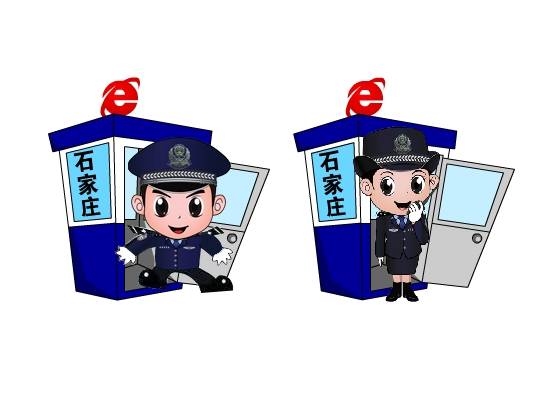实例介绍
【实例截图】
【核心代码】
package com.example.android.camera2basic;
import android.app.Activity;
import android.app.AlertDialog;
import android.app.Dialog;
import android.app.DialogFragment;
import android.app.Fragment;
import android.content.Context;
import android.content.DialogInterface;
import android.content.res.Configuration;
import android.graphics.ImageFormat;
import android.graphics.Matrix;
import android.graphics.RectF;
import android.graphics.SurfaceTexture;
import android.hardware.camera2.CameraAccessException;
import android.hardware.camera2.CameraCaptureSession;
import android.hardware.camera2.CameraCharacteristics;
import android.hardware.camera2.CameraDevice;
import android.hardware.camera2.CameraManager;
import android.hardware.camera2.CameraMetadata;
import android.hardware.camera2.CaptureRequest;
import android.hardware.camera2.TotalCaptureResult;
import android.hardware.camera2.params.StreamConfigurationMap;
import android.media.Image;
import android.media.ImageReader;
import android.os.Bundle;
import android.os.Handler;
import android.os.HandlerThread;
import android.util.Size;
import android.util.SparseIntArray;
import android.view.LayoutInflater;
import android.view.Surface;
import android.view.TextureView;
import android.view.View;
import android.view.ViewGroup;
import android.widget.Toast;
import java.io.File;
import java.io.FileNotFoundException;
import java.io.FileOutputStream;
import java.io.IOException;
import java.io.OutputStream;
import java.nio.ByteBuffer;
import java.util.ArrayList;
import java.util.Arrays;
import java.util.List;
public class Camera2BasicFragment extends Fragment implements View.OnClickListener {
/**
* Conversion from screen rotation to JPEG orientation.
*/
private static final SparseIntArray ORIENTATIONS = new SparseIntArray();
static {
ORIENTATIONS.append(Surface.ROTATION_0, 90);
ORIENTATIONS.append(Surface.ROTATION_90, 0);
ORIENTATIONS.append(Surface.ROTATION_180, 270);
ORIENTATIONS.append(Surface.ROTATION_270, 180);
}
/**
* An {@link AutoFitTextureView} for camera preview.
*/
private AutoFitTextureView mTextureView;
/**
* A {@link CaptureRequest.Builder} for camera preview.
*/
private CaptureRequest.Builder mPreviewBuilder;
/**
* A {@link CameraCaptureSession } for camera preview.
*/
private CameraCaptureSession mPreviewSession;
/**
* A reference to the opened {@link CameraDevice}.
*/
private CameraDevice mCameraDevice;
/**
* {@link TextureView.SurfaceTextureListener} handles several lifecycle events on a
* {@link TextureView}.
*/
private TextureView.SurfaceTextureListener mSurfaceTextureListener
= new TextureView.SurfaceTextureListener() {
@Override
public void onSurfaceTextureAvailable(SurfaceTexture surfaceTexture,
int width, int height) {
configureTransform(width, height);
startPreview();
}
@Override
public void onSurfaceTextureSizeChanged(SurfaceTexture surfaceTexture,
int width, int height) {
configureTransform(width, height);
startPreview();
}
@Override
public boolean onSurfaceTextureDestroyed(SurfaceTexture surfaceTexture) {
return true;
}
@Override
public void onSurfaceTextureUpdated(SurfaceTexture surfaceTexture) {
}
};
/**
* The {@link android.util.Size} of camera preview.
*/
private Size mPreviewSize;
/**
* True if the app is currently trying to open camera
*/
private boolean mOpeningCamera;
/**
* {@link CameraDevice.StateListener} is called when {@link CameraDevice} changes its state.
*/
private CameraDevice.StateListener mStateListener = new CameraDevice.StateListener() {
@Override
public void onOpened(CameraDevice cameraDevice) {
// This method is called when the camera is opened. We start camera preview here.
mCameraDevice = cameraDevice;
startPreview();
mOpeningCamera = false;
}
@Override
public void onDisconnected(CameraDevice cameraDevice) {
cameraDevice.close();
mCameraDevice = null;
mOpeningCamera = false;
}
@Override
public void onError(CameraDevice cameraDevice, int error) {
cameraDevice.close();
mCameraDevice = null;
Activity activity = getActivity();
if (null != activity) {
activity.finish();
}
mOpeningCamera = false;
}
};
public static Camera2BasicFragment newInstance() {
Camera2BasicFragment fragment = new Camera2BasicFragment();
fragment.setRetainInstance(true);
return fragment;
}
@Override
public View onCreateView(LayoutInflater inflater, ViewGroup container,
Bundle savedInstanceState) {
return inflater.inflate(R.layout.fragment_camera2_basic, container, false);
}
@Override
public void onViewCreated(final View view, Bundle savedInstanceState) {
mTextureView = (AutoFitTextureView) view.findViewById(R.id.texture);
mTextureView.setSurfaceTextureListener(mSurfaceTextureListener);
view.findViewById(R.id.picture).setOnClickListener(this);
view.findViewById(R.id.info).setOnClickListener(this);
}
@Override
public void onResume() {
super.onResume();
openCamera();
}
@Override
public void onPause() {
super.onPause();
if (null != mCameraDevice) {
mCameraDevice.close();
mCameraDevice = null;
}
}
/**
* Opens a {@link CameraDevice}. The result is listened by `mStateListener`.
*/
private void openCamera() {
final Activity activity = getActivity();
if (null == activity || activity.isFinishing() || mOpeningCamera) {
return;
}
mOpeningCamera = true;
CameraManager manager = (CameraManager) activity.getSystemService(Context.CAMERA_SERVICE);
try {
String cameraId = manager.getCameraIdList()[0];
// To get a list of available sizes of camera preview, we retrieve an instance of
// StreamConfigurationMap from CameraCharacteristics
CameraCharacteristics characteristics = manager.getCameraCharacteristics(cameraId);
StreamConfigurationMap map = characteristics
.get(CameraCharacteristics.SCALER_STREAM_CONFIGURATION_MAP);
mPreviewSize = map.getOutputSizes(SurfaceTexture.class)[0];
// We fit the aspect ratio of TextureView to the size of preview we picked.
int orientation = getResources().getConfiguration().orientation;
if (orientation == Configuration.ORIENTATION_LANDSCAPE) {
mTextureView.setAspectRatio(mPreviewSize.getWidth(), mPreviewSize.getHeight());
} else {
mTextureView.setAspectRatio(mPreviewSize.getHeight(), mPreviewSize.getWidth());
}
// We are opening the camera with a listener. When it is ready, onOpened of
// mStateListener is called.
manager.openCamera(cameraId, mStateListener, null);
} catch (CameraAccessException e) {
Toast.makeText(activity, "Cannot access the camera.", Toast.LENGTH_SHORT).show();
activity.finish();
} catch (NullPointerException e) {
// Currently an NPE is thrown when the Camera2API is used but not supported on the
// device this code runs.
new ErrorDialog().show(getFragmentManager(), "dialog");
}
}
/**
* Starts the camera preview.
*/
private void startPreview() {
if (null == mCameraDevice || !mTextureView.isAvailable() || null == mPreviewSize) {
return;
}
try {
SurfaceTexture texture = mTextureView.getSurfaceTexture();
assert texture != null;
// We configure the size of default buffer to be the size of camera preview we want.
texture.setDefaultBufferSize(mPreviewSize.getWidth(), mPreviewSize.getHeight());
// This is the output Surface we need to start preview.
Surface surface = new Surface(texture);
// We set up a CaptureRequest.Builder with the output Surface.
mPreviewBuilder = mCameraDevice.createCaptureRequest(CameraDevice.TEMPLATE_PREVIEW);
mPreviewBuilder.addTarget(surface);
// Here, we create a CameraCaptureSession for camera preview.
mCameraDevice.createCaptureSession(Arrays.asList(surface),
new CameraCaptureSession.StateListener() {
@Override
public void onConfigured(CameraCaptureSession cameraCaptureSession) {
// When the session is ready, we start displaying the preview.
mPreviewSession = cameraCaptureSession;
updatePreview();
}
@Override
public void onConfigureFailed(CameraCaptureSession cameraCaptureSession) {
Activity activity = getActivity();
if (null != activity) {
Toast.makeText(activity, "Failed", Toast.LENGTH_SHORT).show();
}
}
}, null
);
} catch (CameraAccessException e) {
e.printStackTrace();
}
}
/**
* Updates the camera preview. {@link #startPreview()} needs to be called in advance.
*/
private void updatePreview() {
if (null == mCameraDevice) {
return;
}
try {
// The camera preview can be run in a background thread. This is a Handler for camera
// preview.
setUpCaptureRequestBuilder(mPreviewBuilder);
HandlerThread thread = new HandlerThread("CameraPreview");
thread.start();
Handler backgroundHandler = new Handler(thread.getLooper());
// Finally, we start displaying the camera preview.
mPreviewSession.setRepeatingRequest(mPreviewBuilder.build(), null, backgroundHandler);
} catch (CameraAccessException e) {
e.printStackTrace();
}
}
/**
* Fills in parameters of the {@link CaptureRequest.Builder}.
*
* @param builder The builder for a {@link CaptureRequest}
*/
private void setUpCaptureRequestBuilder(CaptureRequest.Builder builder) {
// In this sample, we just let the camera device pick the automatic settings.
builder.set(CaptureRequest.CONTROL_MODE, CameraMetadata.CONTROL_MODE_AUTO);
}
/**
* Configures the necessary {@link android.graphics.Matrix} transformation to `mTextureView`.
* This method should be called after the camera preview size is determined in openCamera and
* also the size of `mTextureView` is fixed.
*
* @param viewWidth The width of `mTextureView`
* @param viewHeight The height of `mTextureView`
*/
private void configureTransform(int viewWidth, int viewHeight) {
Activity activity = getActivity();
if (null == mTextureView || null == mPreviewSize || null == activity) {
return;
}
int rotation = activity.getWindowManager().getDefaultDisplay().getRotation();
Matrix matrix = new Matrix();
RectF viewRect = new RectF(0, 0, viewWidth, viewHeight);
RectF bufferRect = new RectF(0, 0, mPreviewSize.getHeight(), mPreviewSize.getWidth());
float centerX = viewRect.centerX();
float centerY = viewRect.centerY();
if (Surface.ROTATION_90 == rotation || Surface.ROTATION_270 == rotation) {
bufferRect.offset(centerX - bufferRect.centerX(), centerY - bufferRect.centerY());
matrix.setRectToRect(viewRect, bufferRect, Matrix.ScaleToFit.FILL);
float scale = Math.max(
(float) viewHeight / mPreviewSize.getHeight(),
(float) viewWidth / mPreviewSize.getWidth());
matrix.postScale(scale, scale, centerX, centerY);
matrix.postRotate(90 * (rotation - 2), centerX, centerY);
}
mTextureView.setTransform(matrix);
}
/**
* Takes a picture.
*/
private void takePicture() {
try {
final Activity activity = getActivity();
if (null == activity || null == mCameraDevice) {
return;
}
CameraManager manager =
(CameraManager) activity.getSystemService(Context.CAMERA_SERVICE);
// Pick the best JPEG size that can be captured with this CameraDevice.
CameraCharacteristics characteristics =
manager.getCameraCharacteristics(mCameraDevice.getId());
Size[] jpegSizes = null;
if (characteristics != null) {
jpegSizes = characteristics
.get(CameraCharacteristics.SCALER_STREAM_CONFIGURATION_MAP)
.getOutputSizes(ImageFormat.JPEG);
}
int width = 640;
int height = 480;
if (jpegSizes != null && 0 < jpegSizes.length) {
width = jpegSizes[0].getWidth();
height = jpegSizes[0].getHeight();
}
// We use an ImageReader to get a JPEG from CameraDevice.
// Here, we create a new ImageReader and prepare its Surface as an output from camera.
ImageReader reader = ImageReader.newInstance(width, height, ImageFormat.JPEG, 1);
List<Surface> outputSurfaces = new ArrayList<Surface>(2);
outputSurfaces.add(reader.getSurface());
outputSurfaces.add(new Surface(mTextureView.getSurfaceTexture()));
// This is the CaptureRequest.Builder that we use to take a picture.
final CaptureRequest.Builder captureBuilder =
mCameraDevice.createCaptureRequest(CameraDevice.TEMPLATE_STILL_CAPTURE);
captureBuilder.addTarget(reader.getSurface());
setUpCaptureRequestBuilder(captureBuilder);
// Orientation
int rotation = activity.getWindowManager().getDefaultDisplay().getRotation();
captureBuilder.set(CaptureRequest.JPEG_ORIENTATION, ORIENTATIONS.get(rotation));
// Output file
final File file = new File(activity.getExternalFilesDir(null), "pic.jpg");
// This listener is called when a image is ready in ImageReader
ImageReader.OnImageAvailableListener readerListener =
new ImageReader.OnImageAvailableListener() {
@Override
public void onImageAvailable(ImageReader reader) {
Image image = null;
try {
image = reader.acquireLatestImage();
ByteBuffer buffer = image.getPlanes()[0].getBuffer();
byte[] bytes = new byte[buffer.capacity()];
buffer.get(bytes);
save(bytes);
} catch (FileNotFoundException e) {
e.printStackTrace();
} catch (IOException e) {
e.printStackTrace();
} finally {
if (image != null) {
image.close();
}
}
}
private void save(byte[] bytes) throws IOException {
OutputStream output = null;
try {
output = new FileOutputStream(file);
output.write(bytes);
} finally {
if (null != output) {
output.close();
}
}
}
};
// We create a Handler since we want to handle the result JPEG in a background thread
HandlerThread thread = new HandlerThread("CameraPicture");
thread.start();
final Handler backgroundHandler = new Handler(thread.getLooper());
reader.setOnImageAvailableListener(readerListener, backgroundHandler);
// This listener is called when the capture is completed.
// Note that the JPEG data is not available in this listener, but in the
// ImageReader.OnImageAvailableListener we created above.
final CameraCaptureSession.CaptureListener captureListener =
new CameraCaptureSession.CaptureListener() {
@Override
public void onCaptureCompleted(CameraCaptureSession session,
CaptureRequest request,
TotalCaptureResult result) {
Toast.makeText(activity, "Saved: " file, Toast.LENGTH_SHORT).show();
// We restart the preview when the capture is completed
startPreview();
}
};
// Finally, we can start a new CameraCaptureSession to take a picture.
mCameraDevice.createCaptureSession(outputSurfaces,
new CameraCaptureSession.StateListener() {
@Override
public void onConfigured(CameraCaptureSession session) {
try {
session.capture(captureBuilder.build(), captureListener,
backgroundHandler);
} catch (CameraAccessException e) {
e.printStackTrace();
}
}
@Override
public void onConfigureFailed(CameraCaptureSession session) {
}
}, backgroundHandler
);
} catch (CameraAccessException e) {
e.printStackTrace();
}
}
@Override
public void onClick(View view) {
switch (view.getId()) {
case R.id.picture: {
takePicture();
break;
}
case R.id.info: {
Activity activity = getActivity();
if (null != activity) {
new AlertDialog.Builder(activity)
.setMessage(R.string.intro_message)
.setPositiveButton(android.R.string.ok, null)
.show();
}
break;
}
}
}
public static class ErrorDialog extends DialogFragment {
@Override
public Dialog onCreateDialog(Bundle savedInstanceState) {
final Activity activity = getActivity();
return new AlertDialog.Builder(activity)
.setMessage("This device doesn't support Camera2 API.")
.setPositiveButton(android.R.string.ok, new DialogInterface.OnClickListener() {
@Override
public void onClick(DialogInterface dialogInterface, int i) {
activity.finish();
}
})
.create();
}
}
}
标签: c
小贴士
感谢您为本站写下的评论,您的评论对其它用户来说具有重要的参考价值,所以请认真填写。
- 类似“顶”、“沙发”之类没有营养的文字,对勤劳贡献的楼主来说是令人沮丧的反馈信息。
- 相信您也不想看到一排文字/表情墙,所以请不要反馈意义不大的重复字符,也请尽量不要纯表情的回复。
- 提问之前请再仔细看一遍楼主的说明,或许是您遗漏了。
- 请勿到处挖坑绊人、招贴广告。既占空间让人厌烦,又没人会搭理,于人于己都无利。
关于好例子网
本站旨在为广大IT学习爱好者提供一个非营利性互相学习交流分享平台。本站所有资源都可以被免费获取学习研究。本站资源来自网友分享,对搜索内容的合法性不具有预见性、识别性、控制性,仅供学习研究,请务必在下载后24小时内给予删除,不得用于其他任何用途,否则后果自负。基于互联网的特殊性,平台无法对用户传输的作品、信息、内容的权属或合法性、安全性、合规性、真实性、科学性、完整权、有效性等进行实质审查;无论平台是否已进行审查,用户均应自行承担因其传输的作品、信息、内容而可能或已经产生的侵权或权属纠纷等法律责任。本站所有资源不代表本站的观点或立场,基于网友分享,根据中国法律《信息网络传播权保护条例》第二十二与二十三条之规定,若资源存在侵权或相关问题请联系本站客服人员,点此联系我们。关于更多版权及免责申明参见 版权及免责申明



网友评论
我要评论